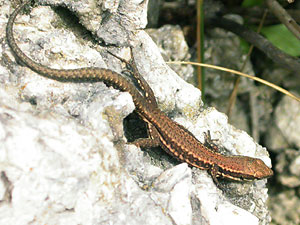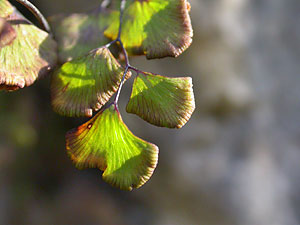On the way to the Bill we stopped to look at a remarkable set of dinosaur footprints. See http://www.soton.ac.uk/~imw/portdino.htm for a detailed account of these fossils by Ian West of Southampton University..
Portland Bill, 1000
At the Bill we were pleased to see 2 Black Redstarts near the internationally important raised beach deposit on the Westcliffs. Walking along the Eastcliffs to the Bird Observatory we passed a number of wave-cut platforms and a crane used to lower fishing boats into the sea. Reaching the Bird Observatory we were treated to exceptionally close views of a Goldcrest on the Observatory garden. The Portland Bird Observatory web site is updated every day with a summary of the day's sightings - see www.portlandbirdobs.btinternet.co.uk.

Further north along the Eastcliffs we explored an old clifftop quarry which had some excellent exposures of the Purbeck series with its characteristic tree root holes and dirt bed - the 130 million year old soil trapped between the Purbeck beds and the Portland Beds. Here we also found a family of Wall Lizards - Mum, Dad and several babies! Birds included Kestrels, Peregrines and a Raven.






